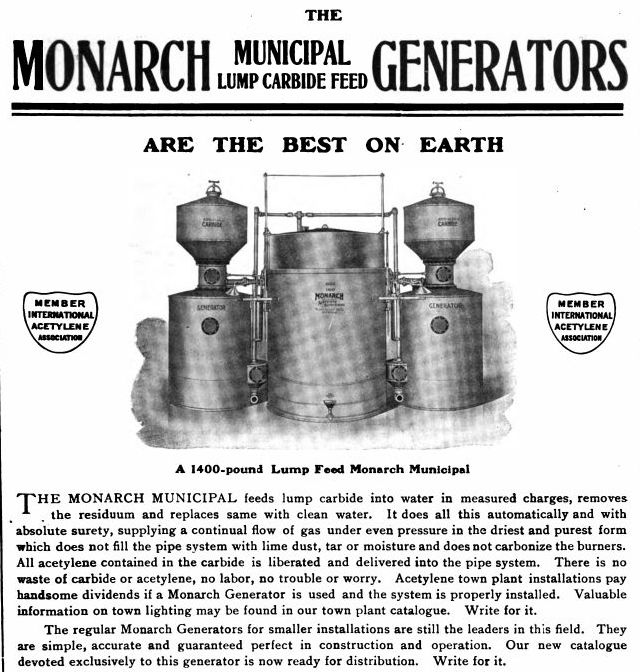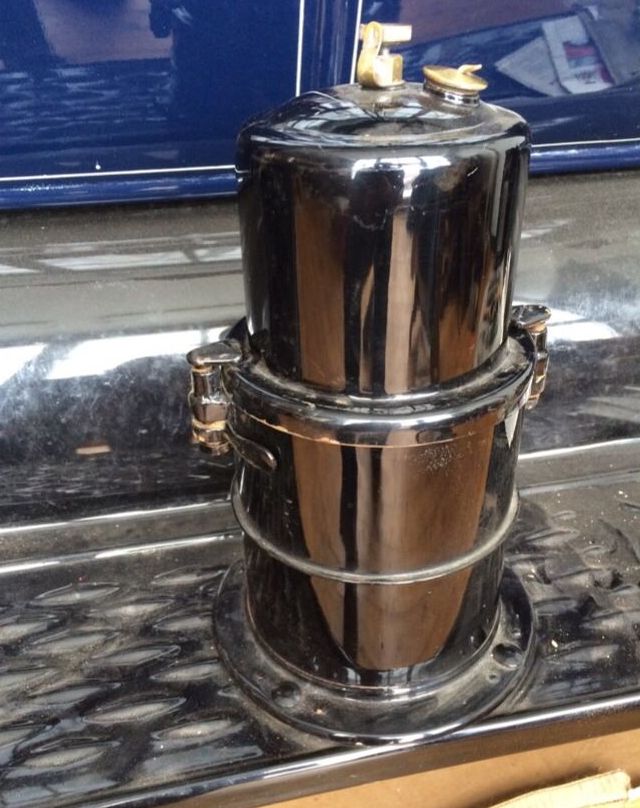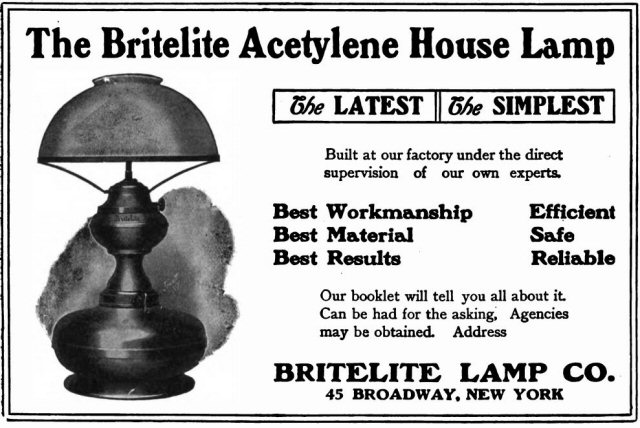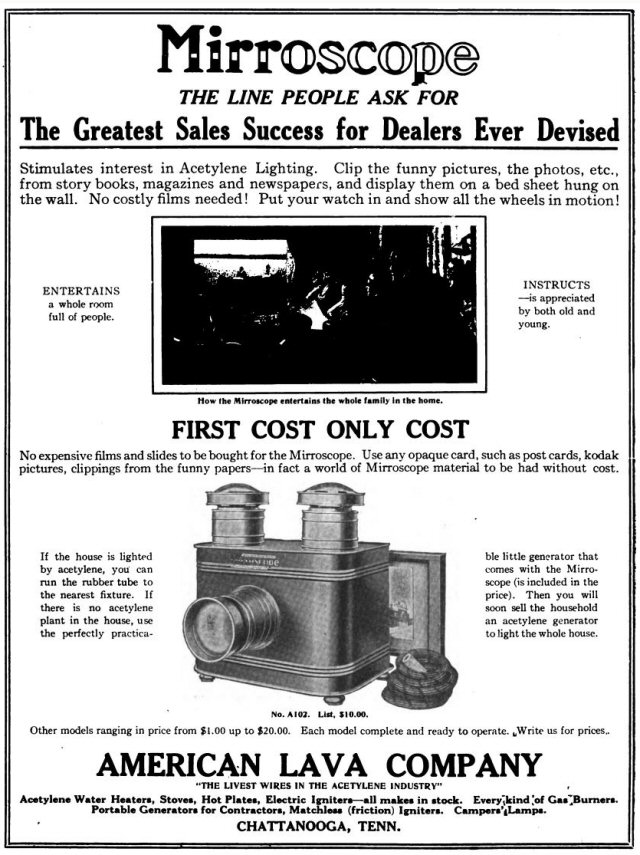Saturday, January 04, 2020
Acetylene world
After showing the Great Smith truck in food vending mode, I decided to make a proper accessory with shelves and hotplate.
The heat source would logically be acetylene, because the Great Smith already had an acetylene generator on board for its headlights.
Looking through Googlebooks, I found the Acetylene Journal from 1912. An alternate universe opened up.
We tend to think of acetylene as a welding gas, supplied in high-pressure cylinders, dangerous and hard to handle. This is a more recent way of using the gas. In 1906, acetylene was supplied on demand by generators using calcium carbide granules or rocks. Carbide is neutral and safe until you put water on it, and acetylene gas is non-toxic. (Plants love it.)
CaC2 + 2H2O → Ca(OH)2 + C2H2
On contact with water the carbide turns to limestone, and the acetylene gas is burned IMMEDIATELY, turning into CO2 and water, releasing heat and light. In these generators there's no storage of gas, no pressurized tanks.
I remember using a miniature acetylene generator in the 'hatlight' I bought for spelunking. The process was easy to control. A few drops of water gave enough acetylene for an hour of light. When not in contact with liquid water the carbide was just inert like rock salt. (This video shows the same lamp in use. These lamps are EXPENSIVE now! Wish I'd kept it.)
Big generators for town usage were available:
 and smaller generators for cars:
and smaller generators for cars:
 and free-standing lamps:
and free-standing lamps:
 and this thing:
and this thing:
 Why did low-pressure acetylene disappear? Most of the answer is wildly obvious. Nothing can compete with electricity for flexibility and ease of use. Cars and houses switched to electricity and never looked back. That's not the puzzle. The puzzling comparison is acetylene versus propane for emergency and off-grid heat and light. Propane won despite being far more dangerous and toxic.
Why did low-pressure acetylene disappear? Most of the answer is wildly obvious. Nothing can compete with electricity for flexibility and ease of use. Cars and houses switched to electricity and never looked back. That's not the puzzle. The puzzling comparison is acetylene versus propane for emergency and off-grid heat and light. Propane won despite being far more dangerous and toxic.
 and smaller generators for cars:
and smaller generators for cars:
 and free-standing lamps:
and free-standing lamps:
 and this thing:
and this thing:
 Why did low-pressure acetylene disappear? Most of the answer is wildly obvious. Nothing can compete with electricity for flexibility and ease of use. Cars and houses switched to electricity and never looked back. That's not the puzzle. The puzzling comparison is acetylene versus propane for emergency and off-grid heat and light. Propane won despite being far more dangerous and toxic.
Why did low-pressure acetylene disappear? Most of the answer is wildly obvious. Nothing can compete with electricity for flexibility and ease of use. Cars and houses switched to electricity and never looked back. That's not the puzzle. The puzzling comparison is acetylene versus propane for emergency and off-grid heat and light. Propane won despite being far more dangerous and toxic.Labels: 1901, Patient things, storage
